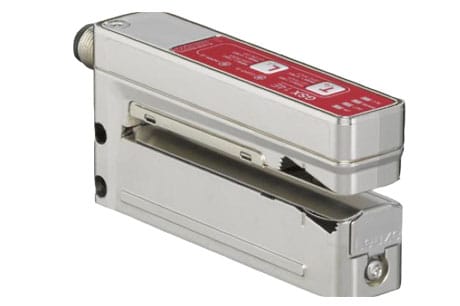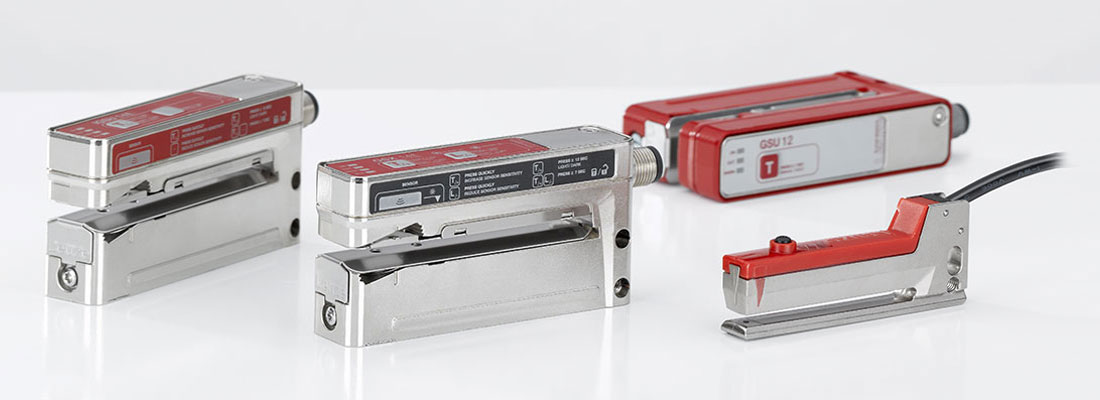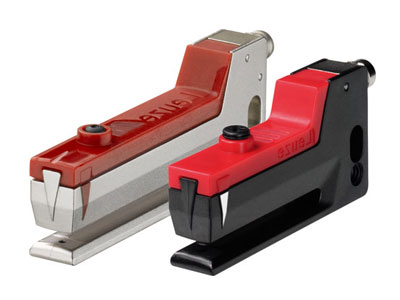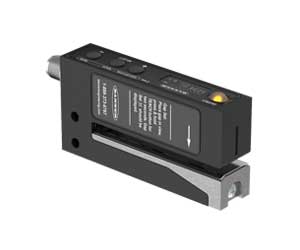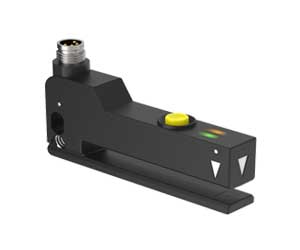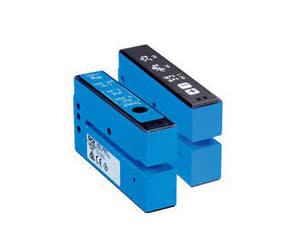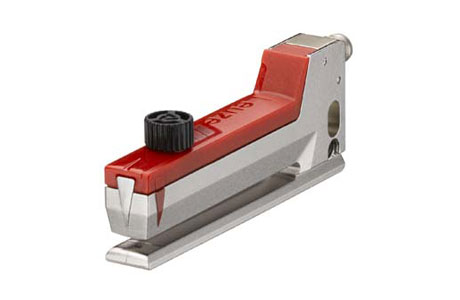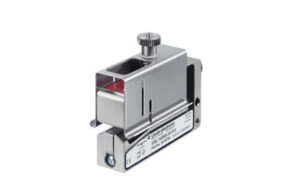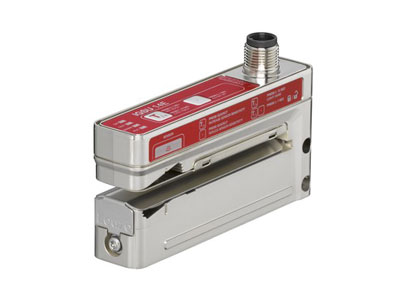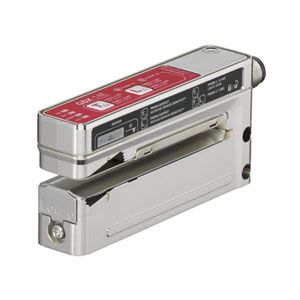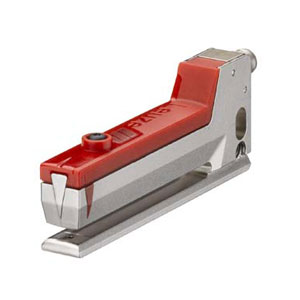Ultimate Guide to Label Gap Sensors
Label Gap Sensors are electronic devices that are designed to detect the gap between two adhesive labels. They are widely used in the labeling industry, where they help automate and optimize the labeling process. Label gap sensors work by detecting the space between labels on a roll or web, which helps to ensure that the labels are applied accurately and consistently. They can be used in a variety of labeling applications, such as product labeling, barcode labeling, and packaging labeling.
In this blog we provide a comprehensive guide to label gap sensors, including what they are, how they work, and their benefits in various labeling applications. This blog will cover the features of label gap sensors, how they differ from other types of label sensors, the advantages of using label gap sensors, and how to choose the right label gap sensor for your specific labeling needs.
We will also explore the various applications of label gap sensors in different industries and discuss future developments and trends in label gap sensor technology. By the end of this blog, you will have a better understanding of label gap sensors and their role in optimizing the labeling process.
What is a Label Sensor?
A label sensor is a type of sensor used to detect the presence of labels on a continuous web of material, such as in packaging, printing, or labeling applications. It detects the gap or notch between two labels or the leading or trailing edge of a label to determine when to trigger an action, such as printing, cutting, or dispensing. The label sensor helps to ensure accurate and precise placement of the labels, improving the quality and efficiency of the labeling process.
Types of Label Sensors:
There are several types of label sensors available, including:
Label gap sensors: These sensors detect the gap or notch between two labels and trigger an action, such as printing or cutting. They are ideal for applications where the labels are spaced evenly apart.
Label sensors with registration mark detection: These sensors detect the presence of registration marks on labels to ensure accurate positioning and alignment.
Label contrast sensors: These sensors detect the contrast between the label and the background material to determine the position of the label.
What are Label Gap Sensors?
Label Gap Sensors are devices that detect the gap between two adhesive labels. They are used in a variety of labeling applications, such as product labeling, barcode labeling, and packaging labeling. The sensors work by detecting the space between labels on a roll or web, which helps to ensure that the labels are applied accurately and consistently. Label Gap Sensors are an essential component of automated labeling processes, as they help to optimize and streamline the labeling process.
Types of Label Gap Sensors
There are two main types of Label Gap Sensors: Optical sensors and Mechanical sensors. Optical sensors use a light source and a photoelectric sensor to detect the gap between labels. Mechanical sensors use a roller or other mechanism to detect the gap between labels. Within each type, there are various subtypes of sensors that are designed for specific labeling applications.
Optical Sensors vs Mechanical Sensors
Optical sensors and mechanical sensors are the two main types of label gap sensors. Each type of sensor has its own advantages and disadvantages, and the choice between the two will depend on the specific labeling application and the environmental conditions of the labeling process.
Optical sensors use a light source and a photoelectric sensor to detect the gap between labels. When the gap passes over the sensor, the light is interrupted, which triggers the sensor to send a signal to the labeling machine. Optical sensors are ideal for high-speed labeling applications, as they can detect gaps quickly and accurately. They are also more resistant to contamination and wear than mechanical sensors. However, optical sensors may not be as reliable in environments with high levels of dust or other particles that can interfere with the light beam.
Mechanical sensors use a roller or other mechanism to detect the gap between labels. When the gap passes over the sensor, the roller rotates, which triggers the sensor to send a signal to the labeling machine. Mechanical sensors are ideal for low-speed labeling applications and environments where there is a lot of dust or other particles that can interfere with optical sensors. They are also less expensive than optical sensors and can be more easily maintained. However, mechanical sensors are more prone to wear and require regular calibration to ensure accuracy.
In simple, optical sensors are ideal for high-speed labeling applications and environments where there is little dust or other particles, while mechanical sensors are better suited for low-speed labeling applications and environments with a lot of dust or other particles. The choice between the two will depend on the specific needs and conditions of the labeling process.
How do Label Gap Sensors work?
Optical Label Gap Sensors work by shining a beam of light onto the web of labels. When the gap between two labels passes over the sensor, the light is interrupted, which triggers the sensor to send a signal to the labeling machine.
The labeling machine then advances the web of labels to the next label. Mechanical Label Gap Sensors work by using a roller or other mechanism to detect the gap between labels. When the gap passes over the sensor, the roller rotates, which triggers the sensor to send a signal to the labeling machine.
The labeling machine then advances the web of labels to the next label. Both types of Label Gap Sensors are accurate and reliable, and they can be used in a variety of labeling applications.
Important components in Label Gap Sensors
The main components of Label Gap Sensors include a light source, a photoelectric sensor (for optical sensors), a roller or other mechanism (for mechanical sensors), and a signal output. In optical sensors, the light source may be a LED or a laser, and the photoelectric sensor may be a photodiode or a phototransistor. In mechanical sensors, the roller or other mechanism may be made of metal or plastic and may include a spring or other mechanism to ensure accurate detection of label gaps.
Label Gap Sensors may also include various other features, such as adjustable sensitivity, multiple output options, and compatibility with various labeling materials. These features will depend on the specific labeling application and the requirements of the labeling process.
Features of Label Gap Sensors
Label Gap Sensors are important components in the labeling process and offer a number of features that make them ideal for a wide range of labeling applications. Some of the key features of Label Gap Sensors include:
High Precision: Label Gap Sensors are designed to detect gaps between labels with a high degree of accuracy. They can detect gaps that are as small as a few millimeters, ensuring that the labels are applied accurately and consistently.
Versatility: Label Gap Sensors are compatible with a wide range of labeling materials, including paper, film, and foil. They can also be used in a variety of labeling applications, such as food and beverage labeling, pharmaceutical labeling, and industrial labeling.
Reliability: Label Gap Sensors are highly reliable, with a low rate of false positives and false negatives. They are designed to operate in harsh environments, such as those with high levels of dust or other particles, and are resistant to wear and tear.
Speed: Label Gap Sensors are designed to detect gaps between labels quickly and accurately, making them ideal for high-speed labeling applications. They can detect gaps in a matter of milliseconds, ensuring that the labeling process is efficient and effective.
Ease of Use: Label Gap Sensors are easy to install and operate, with simple controls and intuitive interfaces. They can be integrated into existing labeling systems with minimal disruption, and require minimal maintenance to ensure reliable operation.
In simple, Label Gap Sensors offer a range of features that make them ideal for a wide range of labeling applications. They are highly precise, versatile, reliable, and fast, and are easy to use and maintain. These features make Label Gap Sensors an essential component of any labeling system.
Label Gap Sensors vs Label Sensor
Label Gap Sensors and Label Sensors are not the same, although they are both used in the labeling process.
A Label Sensor is a type of sensor that detects the presence of a label on a roll or web of labels. The sensor works by shining a beam of light onto the label and measuring the amount of light reflected back. If the label is present, the sensor sends a signal to the labeling machine, which then applies the label to the product.
In contrast, a Label Gap Sensor is a type of sensor that detects the gap between two adhesive labels. The sensor works by detecting the space between labels on a roll or web, which helps to ensure that the labels are applied accurately and consistently. There are two main types of Label Gap Sensors: optical sensors and mechanical sensors.
While both Label Sensors and Label Gap Sensors are important components in the labeling process, they serve different functions. Label Sensors detect the presence of a label, while Label Gap Sensors detect the gap between labels. Both types of sensors are essential for ensuring accurate and efficient labeling, depending on the specific labeling application and requirements.
Why would I choose a Clear Label Sensor over a Standard Label Sensor?
Clear label sensors are a type of label sensor used to detect clear or translucent labels. They are designed to detect the presence of clear labels on a continuous web of material, such as in packaging, printing, or labeling applications. Clear label sensors use advanced sensing technology to detect clear labels, making them an ideal choice for applications where standard label sensors may struggle to detect clear labels.
Comparison between Clear Label Sensors and Standard Label Sensors
Clear label sensors and standard label sensors operate differently and are designed for different applications. Standard label sensors are designed to detect the gap between two labels, the leading edge or trailing edge of a label, or the presence of registration marks on a label. They are ideal for applications where labels are opaque and have a contrasting background.
Clear label sensors, on the other hand, are designed specifically for clear or translucent labels that do not have a high-contrast edge or registration mark. They use specialized optical technology to detect the absence or presence of a label, rather than detecting a gap or registration mark. Clear label sensors are ideal for applications where clear or translucent labels are used, such as in the food and beverage industry where clear labels are used to showcase the product inside the packaging.
Applications of Clear Label Sensors
Clear label sensors are useful in a variety of industries and applications, including:
Food and beverage industry: Clear label sensors are ideal for detecting clear or translucent labels used on food and beverage packaging.
Pharmaceutical industry: Clear label sensors are used in pharmaceutical packaging to ensure the correct labeling of products.
Cosmetics industry: Clear label sensors are used to detect clear labels on cosmetics packaging.
Automotive industry: Clear label sensors are used to detect clear labels on automotive parts and components.
In simple, clear label sensors are a specialized type of label sensor that are designed to detect clear or translucent labels. They are an ideal solution for applications where standard label sensors may struggle to detect clear labels. Clear label sensors are used in a variety of industries and applications, including food and beverage, pharmaceutical, cosmetics, and automotive industries.
Advantages of Label Gap Sensors
Label gap sensors have several advantages that make them a popular choice for labeling applications. Here are some of the key advantages of label gap sensors:
Better Accuracy: Label gap sensors provide high accuracy in detecting the gap between labels. They are designed to detect the precise location of the label edge, ensuring that labels are applied accurately and consistently. This can be particularly important in applications where labels need to be applied to a specific location on a product or package.
Improved Efficiency: Label gap sensors can improve the efficiency of labeling processes. They work quickly and accurately, ensuring that labels are applied at the correct position and orientation. This can reduce the need for manual adjustments and help to increase the speed of the labeling process, ultimately leading to improved efficiency and productivity.
Cost-effective: Label gap sensors can be a cost-effective solution for labeling applications. They are relatively simple to install and operate, and they require minimal maintenance. Additionally, they can help to reduce waste and minimize the need for rework, ultimately helping to save time and money in the long run.
In simple, label gap sensors provide several advantages, including better accuracy, improved efficiency, and cost-effectiveness. These advantages make label gap sensors an ideal choice for a wide range of labeling applications.
Applications of Label Gap Sensors in Different Industries
Label gap sensors are widely used in various industries, including food and beverage, pharmaceuticals, consumer goods, automotive, and electronics. Here are some of the applications of label gap sensors in each of these industries:
Food and Beverage: In the food and beverage industry, label gap sensors are commonly used for accurate labeling of products such as bottles, cans, and jars. They ensure that labels are applied in the correct position and orientation, and that product information such as expiration dates and nutrition facts are clearly visible.
Pharmaceuticals: In the pharmaceutical industry, label gap sensors are used for the labeling of medicine bottles, packages, and boxes. They ensure that labels are applied accurately and that important information such as dosage and warnings are clearly visible.
Consumer Goods: In the consumer goods industry, label gap sensors are used for the labeling of products such as cosmetics, toiletries, and cleaning supplies. They ensure that labels are applied accurately and that product information such as ingredients and usage instructions are clearly visible.
Automotive: In the automotive industry, label gap sensors are used for the labeling of car parts and components. They ensure that labels are applied accurately and that important information such as part numbers and specifications are clearly visible.
Electronics: In the electronics industry, label gap sensors are used for the labeling of electronic components and devices. They ensure that labels are applied accurately and that important information such as model numbers and safety warnings are clearly visible.
In simple, label gap sensors are used in a wide range of industries for accurate labeling of products and components. They ensure that labels are applied accurately and that important information is clearly visible, ultimately helping to improve safety and compliance in various industries.
Choosing the Right Label Gap Sensor
Label gap sensors are an important tool in labeling applications, and choosing the right one can help ensure accurate and efficient labeling. Here are some factors to consider when choosing a label gap sensor, as well as information on calibration and maintenance, and troubleshooting common issues.
Factors to Consider
Label type and material: The type and material of the label being used can impact the performance of the label gap sensor. For example, clear labels may require a different type of sensor than opaque labels.
Label size and shape: The size and shape of the label can impact the performance of the sensor. Some sensors may be better suited for labels of a certain size or shape.
Label gap size: The size of the gap between labels can impact the performance of the sensor. Some sensors may be more accurate with smaller or larger gap sizes.
Environmental factors: The environment in which the label gap sensor will be used can impact its performance. Factors such as temperature, humidity, and vibration should be considered.
Troubleshooting Common Issues
Some common issues that may arise with label gap sensors include misalignment, improper calibration, and interference from other equipment. Troubleshooting these issues may involve adjusting the sensor position or sensitivity, checking for damage or wear, and ensuring that the sensor is properly calibrated.
In simple, when choosing a label gap sensor, it is important to consider factors such as label type and material, label size and shape, label gap size, and environmental factors. Regular calibration and maintenance can help ensure accurate and reliable performance, and troubleshooting common issues may involve adjusting the sensor position or sensitivity, checking for damage or wear, and ensuring proper calibration.
Summary
Label gap sensors are an essential tool in many industries, providing high precision, reliability, and efficiency. They offer a wide range of applications, from food and beverage to electronics, and their versatility makes them an attractive option for many businesses. As technology continues to advance, we can expect to see even more improvements and innovations in label gap sensor technology, including integration with other technologies and advancements in machine vision.
If you’re interested in incorporating label gap sensors into your insutsrial Application, it’s important to consider factors such as accuracy, speed, and ease of use when selecting the right sensor for your needs. Proper calibration and maintenance are also important to ensure that your sensor is functioning at its best.
Overall, label gap sensors are an investment that can help increase productivity and efficiency, leading to better quality products and a more profitable business. Contact us at Challaturu Automation to learn more about label gap sensors and how they can benefit your business.

